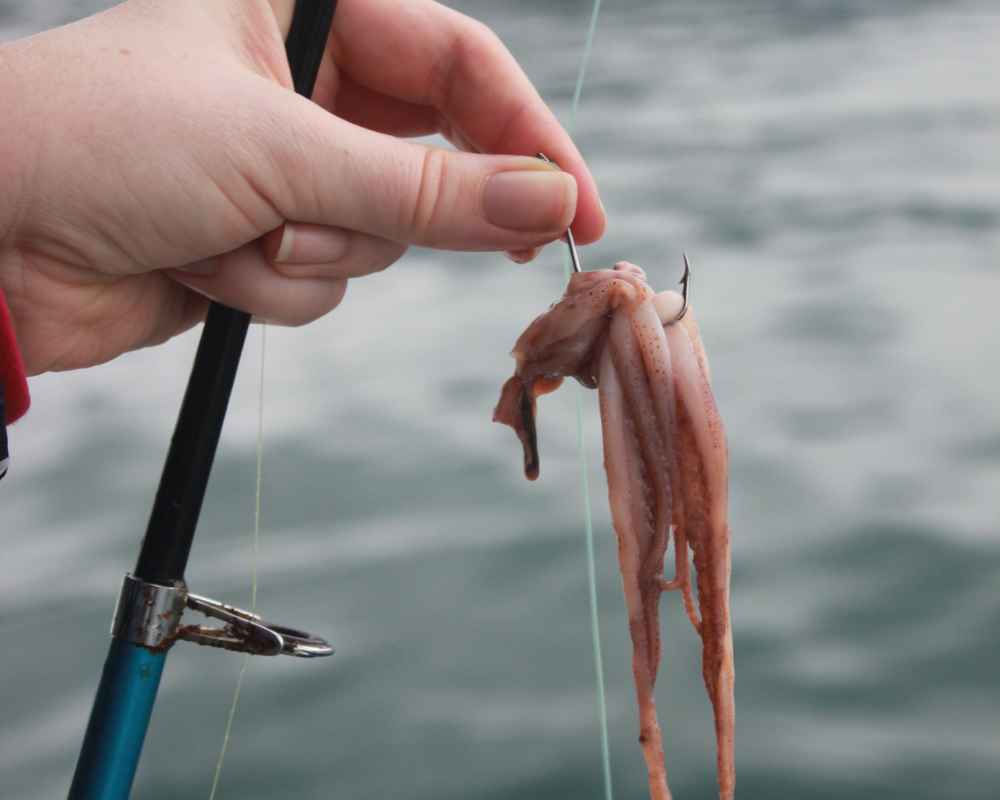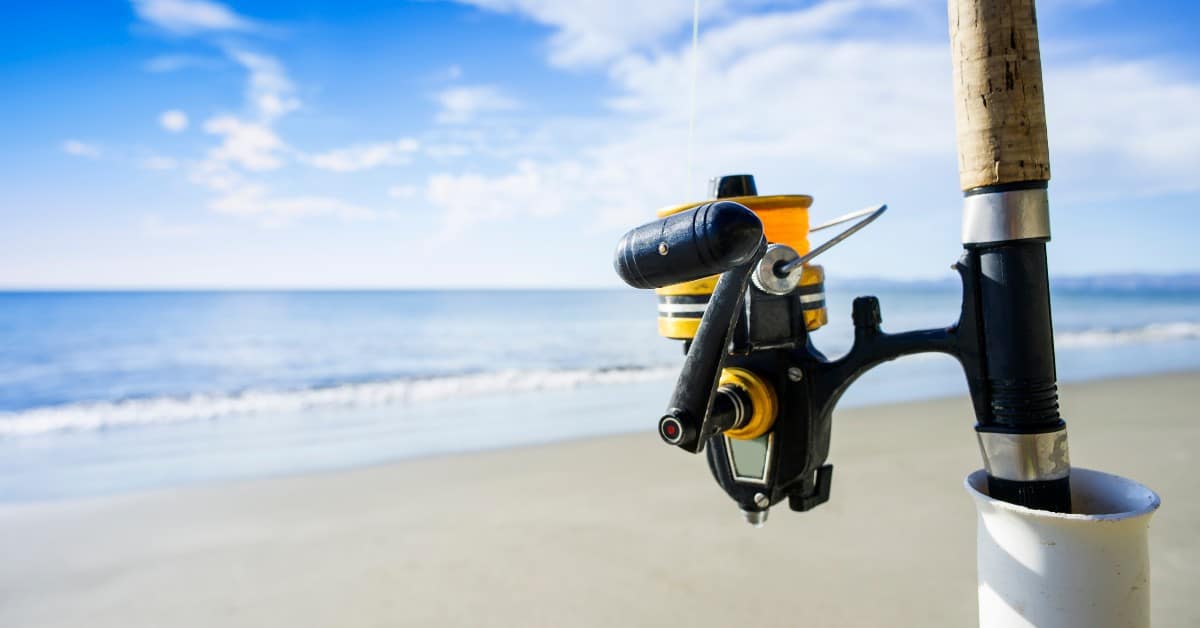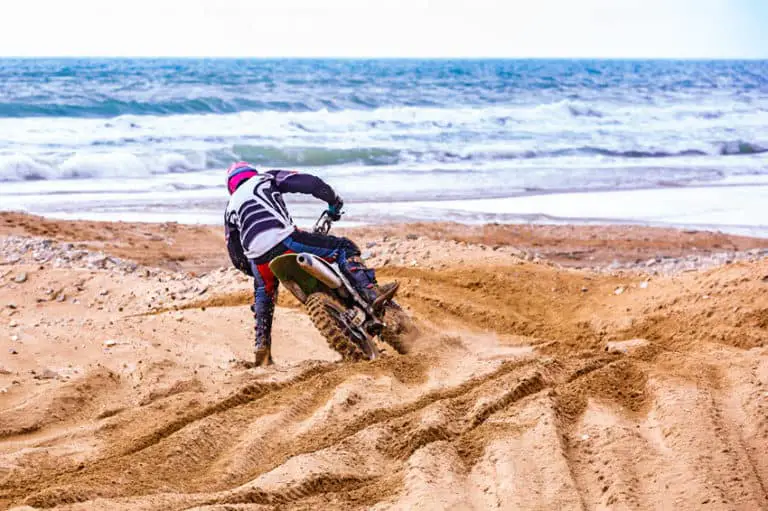Top 10 Best Bait For Surf Fishing: Catch the Big One with These
Estimated reading time: 13 minutes
When it comes to surf fishing, I’ve found that bait choice plays a crucial role in determining the success of the trip. Whether you’re a seasoned angler or just starting your surf fishing journey, knowing which baits work best for the specific fish species you’re targeting is essential. In my experience, certain baits consistently perform better than others in attracting fish to my hook.
In this informative guide, I will be sharing my expertise on the most effective baits for surf fishing. By exploring a range of live, frozen, and artificial options such as shrimp, sand fleas, mullet, and crabs, you’ll gain valuable insight that will help make your next fishing trip both enjoyable and successful. As every angler knows, selecting the right bait is crucial to attract the right fish and improve your chances of landing a prized catch. So, keep reading to discover how the right surf fishing bait can make all the difference in the world.
Best Bait for Surf Fishing
Natural Bait
When it comes to choosing the best bait for surf fishing, I always prefer using fresh or live bait whenever possible. This is because these baits offer a more natural scent and movement, making them more appealing to the fish. Some of my go-to options for natural baits are:
- Live shrimp: This works effectively for a variety of fish species because almost everything eats shrimp.
- Squid: Another versatile option that is loved by many fish species.
- Finger mullet: These are great for targeting predatory fish like redfish, bluefish, and even tarpon.
- Minnows: Perfect for surf fishing in areas with lots of smaller baitfish species.
- Herring or menhaden: Their strong scent can attract various fish species.

Artificial Bait
There are times when I prefer to use artificial baits for surf fishing. This could be because of convenience, getting through smaller bait-stealers, or I simply want to try something different. Here are some of the best lures and artificial baits for surf fishing:
- Sea Striker Surf Spoon: This is my top choice for an overall surf fishing lure because of its versatility and proven effectiveness.
- GOT-CHA Plug Assortment: Affordable and comes in various colors and sizes, these lures have a proven track record in catching fish from the surf.
- Yo-Zuri 3D Inshore Twitchbait: A great option for those targeting inshore species like trout, snook, and redfish. It mimics the motion of a fleeing baitfish.
- Berkley Gulp! Alive! Shrimp: When I want the scent and flavor of live bait without the hassle of keeping them alive, these are my go-to artificial shrimp.
- Yo-Zuri 3D Inshore Popper: Perfect for topwater action during feeding frenzies, this lure creates a commotion to entice aggressive bites from fish.
Please note that the links in this section are Amazon links, and clicking on them will take you to the corresponding Amazon product page.
Remember, choosing the right bait for surf fishing largely depends on factors such as the target species, location, and the current conditions. Mix and match your baits and lures to find the best combination that works for your specific situation. Happy fishing!
Target Species
When it comes to surf fishing, there are several species of fish that I love targeting. Each species may require different types of bait and techniques, so let’s break them down:
- Trout: When I fish for trout in the surf, I’ve found that shrimp and small baitfish, such as sand eels, work well. They seem to love live, natural baits.
- Striped Bass: I like to use live or cut bait, such as bunker, mullet, or herring, for striped bass. They can also be caught with artificial lures like soft plastics, plugs, and poppers.
- Bluefish: I’ve had great success using small live fish as bait for bluefish, including menhaden, herring, mackerel, and butterfish. Artificial lures like spinners, crankbaits, and bucktail jigs work well too.
- Whiting: Shrimp is my go-to bait for whiting. Sand fleas and clams can also be effective.
- Grouper and Snapper: For grouper and snapper, I like using live bait such as pinfish, grunts, and small crustaceans like crabs or shrimp.
- Sharks: When targeting sharks, I prefer using oily fish like mackerel, mullet, or bonito as bait. Chunks of meat from larger fish like barracuda or tuna can also be effective.
- Redfish: My favorite bait for redfish are live or cut mullet, shrimp, and crabs. They also respond well to artificial lures like soft plastics and spoons.
- Pompano: Shrimp is an excellent bait for catching pompano. Sand fleas and clam strips can also work well.
- Drum: For both black and red drum, I recommend using shrimp, crabs, or cut bait such as mullet or menhaden.
- Tarpon: When fishing for tarpon from the surf, I like using live bait like mullet and pinfish, but they will also go for artificial lures such as soft plastics and plugs.
Keep in mind that locations, tides, and seasons can all affect the presence of these species as well as their feeding habits. Don’t be afraid to experiment with different baits and techniques to see what works best for your target species. Happy fishing!
Live and Dead Bait Options
Shrimp
I think shrimp is great as both live and dead bait for surf fishing. It’s convenient since I can easily find fresh, frozen or even live shrimp at local bait shops. When using frozen shrimp, I like to thaw them before heading out to the beach. Live shrimp tends to attract a wider array of fish species and can be hooked through the head, tail, or body.
Mullet
Mullet is another option I’ve had success with, both live and dead. For live bait, I often look for smaller, finger mullet to attract bigger predators. When using dead mullet, I like to cut them into long, narrow strips, mimicking the natural swimming motion in the water.

Squid
Squid is readily available and effective. I prefer using strips of fresh or frozen squid, as it stays on the hook for longer periods compared to live baits. It’s also great for attracting bottom-dwelling fish that prefer feeding on small invertebrates.
Crabs
I’ve found that crabs, like blue crab, can be used as live and dead bait. Live crabs can be quite effective in attracting fish such as red drum and black drum. When using dead crabs, I prefer to break them into pieces and remove the shell before rigging the meat on a hook.
Clams
Clams have been a decent bait option for me as well, especially when targeting fish that eat shellfish. The most effective approach I’ve found is to use fresh dug clams, opened and cut into smaller pieces that can fit on a hook.
Sand Fleas
When I switch to live bait, sand fleas, also known as mole crabs, are a favorite of mine. They’re found burrowed in the sand along the shoreline and can be used to effectively target fish like pompano and whiting.
Fish Bites
For a more convenient option, I sometimes use Fish Bites, which are artificial baits that come in various flavors and scents that mimic natural baits like shrimp, clams, and crabs. They can be cut into strips and easily attached to a hook.
Bait Fish
Finally, using live or dead bait fish is another choice. Bigger fish are attracted to smaller fish such as pinfish or mullet. I’ve caught fish like snook and striped bass using this method. When rigging live bait fish, I insert the hook through the body or lip to allow for natural swimming motion.
By using these different bait options, I’ve been able to successfully surf fish and target a variety of fish species.
Surf Fishing Tackle and Gear
Hooks and Rigs
When I go surf fishing, I make sure to have a variety of hooks in my tackle box. Circle hooks are my go-to choice because they’re less likely to gut-hook fish and usually result in a secure fish lip hook.
I typically use fish finder rigs for large cut bait to target fish over 3ft, like sharks, striped bass, and red drum. A good heavy setup consists of a fish finder rig with a 4 oz sinker, baited with a 2″ thick cut of frozen fish like mullet, shad, or bunker.
Rods and Reels
For surf fishing, I choose rods and reels specifically designed for the task. Surf fishing rods are typically longer (9-14 feet), which allows me to cast further into the surf.

The reels I use are either spinning reels or conventional reels, and they should have a high line capacity and strong drag system to handle the powerful fish found in the surf.
My surf fishing setup includes a light-line surf rod for targeting smaller fish and a heavier rod for larger fish. I always keep an extra rod and reel on hand, just in case one gets damaged.
Lures and Accessories
Having a variety of lures in my tackle box is essential for surf fishing success. I primarily use artificial lures like spoons, jigs, and topwater plugs to target a wide range of fish species.
Apart from lures, there are other accessories I never forget to bring for a surf fishing trip:
- Fishing pliers: These come in handy for unhooking fish with sharp teeth or cutting line.
- Knife: A sharp knife is essential for cutting bait, filleting fish, or trimming line.
- Wet towel: I always have a wet towel ready for cleaning my hands or wiping down my gear.
- Sand spikes or rod holders: These are critical for keeping my rods secure and upright while I fish.
When surf fishing, I also pay close attention to the tides and rip currents. Understanding these conditions helps me choose the best spots and times to cast my line, increasing my chances of landing a big catch.
Beach and Surf Fishing Strategies
Tides and Rip Currents
I like to consider the tides and rip currents when planning my surf fishing trip. The high tide is my favorite time to cast my line, as it tends to bring fish closer to shore. Additionally, rip currents create natural channels that attract fish due to the increased flow of water.

Sandbars and Troughs
One of the key elements in successful surf fishing is recognizing sandbars and troughs. I look for those spots where the waves break on sandbars and create troughs – perfect feeding grounds for my target fish. I prefer casting my line close to the edge of the sandbars or right into the troughs, hoping my bait will get the attention of a hungry fish.
Catch Rate and Bait Selection
To increase my catch rate, I select my bait based on the species I’m targeting. Here’s a quick list of the best bait for some common surf fishing targets:
- Shrimp: pompano, whiting, small lingcod, mackerel
- Sand Crabs: redfish, whiting, pompano, striped bass, blackfish, black drum
- Squid: bluefish, striped bass, redfish
- Ragworms: various species, including redfish
- Herring: King salmon, Coho salmon, halibut, striped bass
I find a combination of live bait and artificial lures to be effective. My go-to live bait includes shrimp, sand crabs, or herring, depending on the fish I’m after. As for artificial lures, I like to have a variety of options to see what works best in a given situation. But remember, always follow the local regulations and make sure your bait choice aligns with them.
By paying attention to tides, rip currents, sandbars, troughs, and choosing the right bait for my target fish, I confidently increase my chances of a successful surf fishing trip.
Bait Shopping and Storage
Tackle Shops
When I go bait shopping for surf fishing, I usually start by visiting a local tackle shop. These shops are staffed with knowledgeable anglers who can provide invaluable advice on the best bait to use for the specific fish species I’m targeting. They often have a variety of options, including live, frozen, and cut bait, as well as artificial lures. Some of my favorites include:
- Shrimp: A versatile bait for a wide range of fish, from pompano and whiting to lingcod and mackerel
- Sand Fleas (Mole Crabs): Found on beaches worldwide, these little crustaceans are a popular choice for various fish species
- Clams: A top bait for surf fishing enthusiasts, although they can be a bit tricky to keep on the hook
- Cut Herring: A common bait for northern species, such as king salmon, coho salmon, halibut, and striped bass
Bait Buckets
Proper storage of my bait is essential to maximize its effectiveness and longevity. That’s why I always use a bait bucket to store my live and cut bait. Here are some tips for selecting and using bait buckets:
- Size: Choose a bucket that’s large enough to hold the amount of bait you plan to use during your fishing trip
- Aeration: For live bait, opt for a bucket with an aerator to keep the water oxygenated and maintain the health of the bait
- Insulation: Insulated bait buckets can help keep frozen bait cold and prevent it from melting too quickly
- Lid: A secure lid is crucial to prevent spills and keep unwanted critters from stealing my bait
For live bait, I fill my bucket with fresh seawater and periodically replace it during the day to keep the water clean and cool. If using cut or frozen bait, I store it in sealed plastic bags or containers to prevent contamination and keep the scent strong.
Whatever bait I choose, I make sure to properly store and handle it to ensure that my surf fishing experience is as successful as possible. With the right bait and storage practices, I’m well-equipped to catch the fish that I’m targeting.
Additional Tips and Safety
When I go surf fishing, I always make sure to keep safety in mind and follow a few tips that have helped me catch more fish. One of those tips is to wear a hat. The sun can be intense during a long day of surf fishing, and wearing a hat helps protect my face and eyes from those harmful UV rays. Plus, it keeps me cool and prevents sunburns.
Choosing the right bait is essential, and I’ve found that mole crabs make great bait for surf fishing. They are commonly found in the area where waves break and can be dug up with ease. They are perfect for targeting species like redfish and pompano that are commonly found in the surf. To use mole crabs as bait, I usually hook them through the middle of the body, making sure not to puncture the internal organs.
Another important tip I like to follow is to always check the weather conditions before heading out for a surf fishing adventure. High winds and rough seas can not only make it challenging to cast and detect bites, but they can also pose safety hazards. I always make sure to avoid fishing during any storm or severe weather event.
Here are some additional tips I keep in mind when surf fishing:
- Arrive early: I like to get to my fishing spot just before sunrise as fish are often more active during this time.
- Be patient: Surf fishing can sometimes be a test of patience. I try to stay diligent and pay close attention to any signs of fish activity in the area.
- Use fresh bait: As I’ve mentioned before, fresh bait is highly recommended for successful surf fishing. It’s much more appealing to fish than frozen or old bait.
- Keep a low profile: Fish can be easily scared away by sudden movements and noise, so I make sure to stay quiet and move slowly while fishing.
Remember to always follow the local fishing regulations and practice catch-and-release when appropriate. Keep our oceans healthy and ensure a sustainable fishing experience for generations to come. Happy fishing!


![11 Best Spinning Rods For Surf Fishing [2023]](https://cdn-0.activeatthebeach.com/wp-content/uploads/2021/06/11-Best-Spinning-Rods-For-Surf-Fishing-768x402.jpg)



